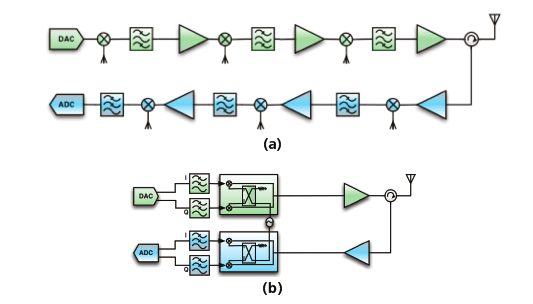Constellations of low-cost, small instruments provide global, distributed, and frequent coverage, enabling unique science observations. However, radars are active instruments with size, mass, and power requirements that are often not compatible with small satellite platforms such as CubeSats or SmallSats.

A novel modulation scheme was developed for Ka-band precipitation profiling radar that reduces the size, mass, and power of the electronics by about an order of magnitude compared to similar radars. It is based on pulse compression and direct IQ up-conversion to reduce the number of components. Through an optimum selection of transmit signal and digital signal processing, spurs are suppressed, the system is not highly sensitive to LO leakage and image suppression, and can achieve high-purity signals with exceptional sidelobe suppression.
This work was done by Eva Peral, Simone Tanelli, Chaitali R. Parashare, Douglas L. Price, and Ninoslav Majurec of Caltech for NASA’s Jet Propulsion Laboratory.
In accordance with Public Law 96-517, the contractor has elected to retain title to this invention. Inquiries concerning rights for its commercial use should be addressed to:
Technology Transfer at JPL
JPL
Mail Stop 321-123
4800 Oak Grove Drive
Pasadena, CA 91109-8099
E-mail: This email address is being protected from spambots. You need JavaScript enabled to view it.
Refer to NPO-49670.

